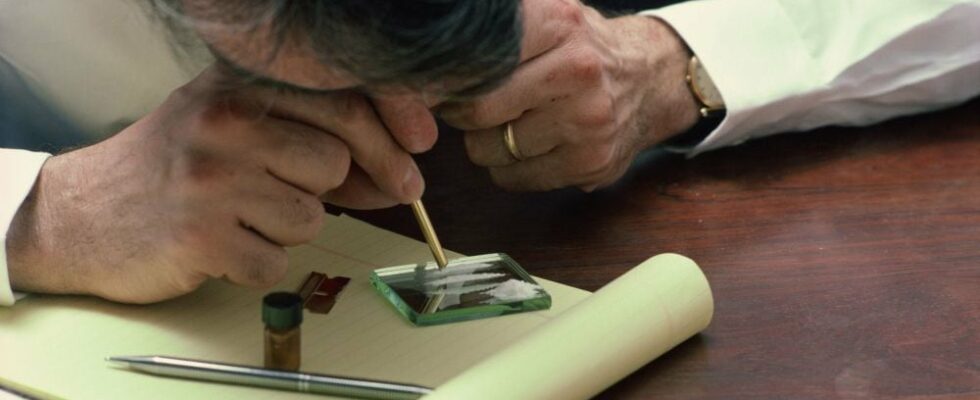A real white tsunami. Cocaine consumption is exploding in France, where one in ten adults have already taken it at least once in their life, shows a study by the French Observatory of Drugs and Addictive Tendencies (OFDT) published Wednesday June 26. The survey on representations, opinions and perceptions of psychotropic drugs (EROPP) was carried out during 2023 in France, on a representative sample of 14,984 people aged 18 to 75.
“Cocaine is increasingly available. The supply has increased significantly, with record seizures, in a context of considerably increasing production, a price which is stagnating – between 60 and 70 euros per gram – while purity increases” , reminds AFP Guillaume Airagnes, director of the OFDT.
Colombia, the world’s largest producer, broke a new record in 2022 with 1,738 tonnes of cocaine manufactured. The same year, 27.7 tonnes of white powder were intercepted in France, according to the authorities’ latest report, a figure multiplied by five in ten years. “We can add to this the democratization of use with a greater variety of types of consumption: festive, but also in professions where the arduousness is high,” he specifies.
In 2023, nearly one in ten adults (9.4%) have used cocaine at least once during their lifetime, compared to 5.6% in 2017. Current use (at least once during of the last 12 months) is experiencing an exponential trajectory: consumption has increased tenfold between 1992 (0.3%) and 2023 (2.7%).
Same observation for MDMA (ecstasy): the prevalence of use over the last 12 months increased from 0.2% in 2000 to 1.8% in 2023, while experimentation jumped between 2017 (5%). and last year (8.2%).
Aging of cannabis users
For thirty years, cannabis has remained the most widely consumed illicit drug in France and its distribution has continued to increase, with a price of between 8 and 10 euros per gram, respectively for resin and grass.
Its experimentation rate increased from 12.7% in 1992 to 50.4% in 2023, or one in two adults. Regular use has remained stable since 2014, affecting 3.4% of adults in France last year. “We are seeing a trend towards aging, with young people consuming less while this is increasing among older people,” explains Mr. Airagnes.
Experimentation with heroin has also increased, from 1.3% in 2017 to 2% of adults last year, with the rate of use in the last 12 months stable in recent years at 0.3 %. Most of the heroin consumed in Europe comes from Afghanistan, where the ban on opium poppy cultivation since April 2022 with the return of the Taliban to power risks reducing its availability on the markets, or even causing shortages.
Its supply remains stable for the moment, with a retail price around 30 euros per gram.
The OFDT study includes for the first time the uses of ketamine, 3MMC and GHB/GBL, three synthetic products often popular in “chemsex” practices, in order to increase sexual pleasure, excitement or endurance.
Experimentation with ketamine, an anesthetic misused for recreational purposes, reaches 2.6% among adults aged 18 to 64 and mainly concerns young people aged 25 to 34 (4.8%). Ketamine is sold in powder or crystals for 40 euros per gram and arrives by postal freight, purchased on the “darknet” – the hidden and opaque side of the web – from South-East Asia, in India in particular.
For 3MMC (synthetic cathinone) and GHB-GBL (an anesthetic and an industrial solvent, both diverted from their original use), the experimentation rates are less than 1%.
